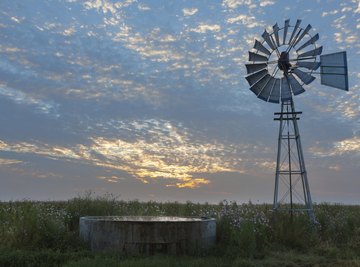
When thinking of windmills, thoughts of an empty meadow of green grass, a brisk wind blowing at just the right speed, cold lemonade and a rocking chair sitting on a porch may run through your mind. Well windmills may offer a mental picture of peace and serenity, but they have a specific purpose and there are many types of windmills to help fulfill that purpose.
Wind Turbines
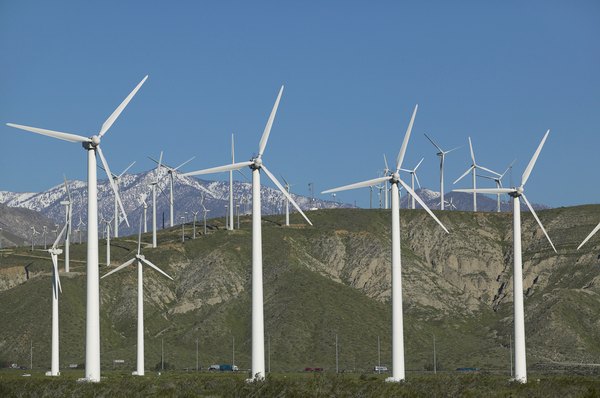
The wind turbine windmill is characterized by its giant three-rotor design. This type of windmill is used to generate mechanical power and electricity, by converting kinetic energy (energy of motion) into mechanical power. The mechanical power connects to a generator, which is converted into electricity. In simple terms, you could say that wind turbines use wind to make electricity and the electricity from the wind turbine travel through distribution lines to provide electricity to schools, businesses and homes.
Post Mill

The post mills were first developed by the French and English and built throughout Russia, Europe, America and colonies all over the world. The first of these European windmills did not have brakes and were constructed until the mid-19th century. The post mill is used for grinding stone, but they are small in size and this limits their grinding capacity. There are two types of post mills. The open post mill's bottom timbers are exposed to the elements. And the closed post mills' bottom timbers are enclosed and can be used for storage.
Simple Drain Mill
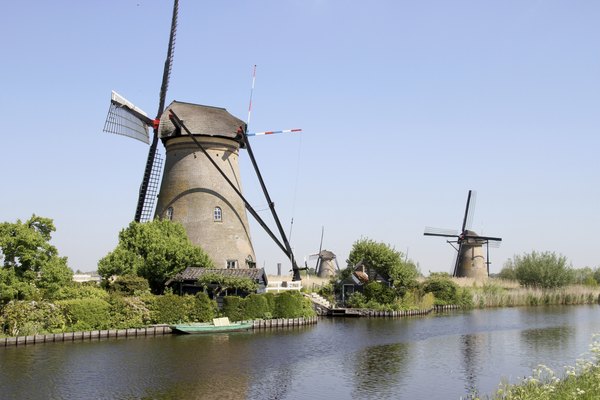
The simple drain mill is used to pump water into irrigation canals. Exclusively found in the Friesland province of the Netherlands, this small mill is designed with sails fixed to an Archimedean screw inside a hollow pipe. The simple drain mill is usually in places where the land is extremely swampy.
American Windmill
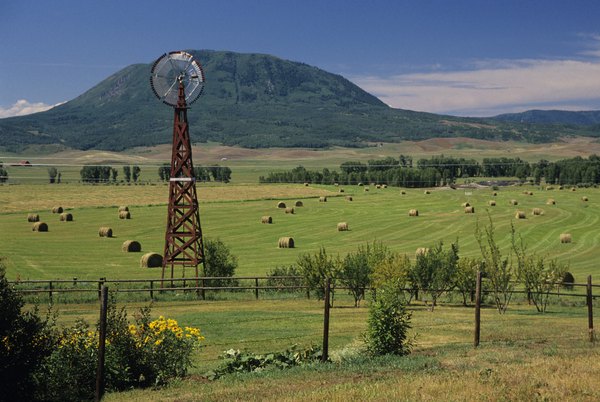
The first American windmill was invented by Daniel Halladay in 1854 in Connecticut. Halladay patented a windmill that did not require the constant attention of an operator. His windmill was made of wood and required a lot of maintenance. But as time went by, metal windmills were introduced and found to be more reliable. Also found to be more reliable were the self-oiling gearboxes and pivoting wind wheels, used by the windmill. These more efficient, maintenance-free windmills were being used by railroad companies and settlers.
Tower Mill
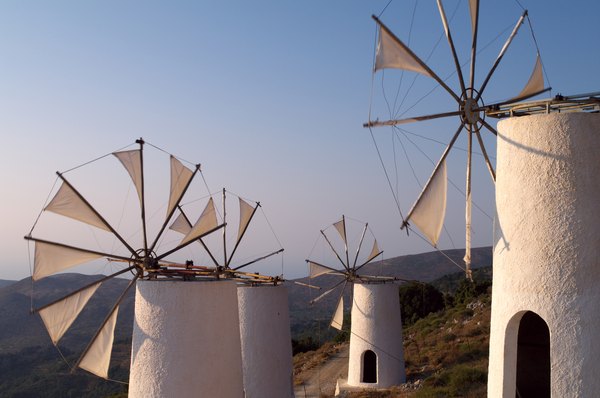
The tower mill is a European windmill built along the sea shore, facing the sea and used to generate energy. The sails of tower mills are like the sail of a boat. The sails have several masts--structure above the upper part of the boat to hold sails--are fixed to a rotating shaft and were first built both on and offshore near Crete, Italy and Greece. There are different styles of tower mills. Grondzeilers' sails rotate and can be accessed from the ground. Beltmolen is built on top of a hill or dike. Binnenkruier is a mock mill with a cap turned by a tail fan. Buitendkruier's cap is turned by the tail pole.
About the Author
Based in Georgia, Loletrazina Church has been a professional freelance writer for more than 24 years. She has written several health-care articles and advertisement publications for websites such as KennethCole.com and Panasonic.com. Church attended Delgado College with a major in surgical technology.
Photo Credits
HannesThirion/iStock/Getty Images
